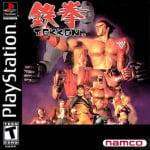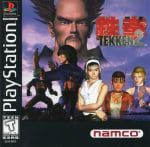
Recently, the head of PlayStation Indies Shuhei Yoshida sat down to recommend 10 PlayStation Plus games to PS Blog readers. And as part of this blog, he gave some unique insights into the early years of PlayStation and the partnership between Sony and Namco that helped bring Tekken home from the arcade.
Yoshida in the early 90s was one of the initial members of the PlayStation project and remembers trying to convince third parties to make 3D games for them. Developers, at the time, however, were unsure about the possibilities of 3D graphics beyond racing titles or shooters. That is until 1993 when Sega's Virtua Fighter arrived on the scene.
In the blog, Yoshida writes:
"Before we launched the original PlayStation, we went around asking game developers to make games for us. However, back then it was considered that 3D graphics could not be used for anything other than shooting and racing games, and early negotiations did not go very well. But then Virtua Fighter appeared in arcades, and the tables were turned. We started getting a lot of calls saying, ‘We want to make 3D games too’."
One of the companies PlayStation approached during this time was Namco, which was in the process of developing a new fighting game called Tekken for its costly System 22 board, in order to try and compete with Virtua Fighter's upcoming sequel.
After a meeting between Sony Computer Entertainment's director of R&D Ken Kutaragi and Namco's research section managing director Shegeichi Nakamura, Sony convinced Namco to go for a more low-cost system that would have better "upwards compatibility" with the PlayStation. They called it System 11.
As Yoshida recalls in the blog:
"We thought that the ability to play popular arcade games on the PlayStation would be a major selling point. At the time, Namco was making its own system boards for arcades, but they required advanced technology and were costly. Former Namco and Sony Computer Entertainment (current Bandai Namco Entertainment and Sony Interactive Entertainment) decided to jointly develop a system board that would have upward compatibility with the PlayStation.
"This made it possible to port games that had become popular in arcades to the console in a short period of time. The first such game was Tekken. The sequel, Tekken 2, was the showcase game using 3D graphics at the time. The storyline revolving around the Mishima Zaibatsu and the unique characters were fascinating and they still leave a strong impression on me today."
Something that's somewhat overlooked in this account is just how much of a risk it would have been for Namco at the time.
In an issue of Edge, published in 1995, Nakamura admits that this move essentially left the big arcade stores to Virtua Fighter, while Tekken would appear in much smaller arcades. If the game didn't do well on PlayStation, it would have been a serious miscalculation for the company. Nevertheless, as history tells us, it all worked out well in the end, and Namco went on to produce a string of classics for the PlayStation, including Soul Blade and Point Blank 2.







